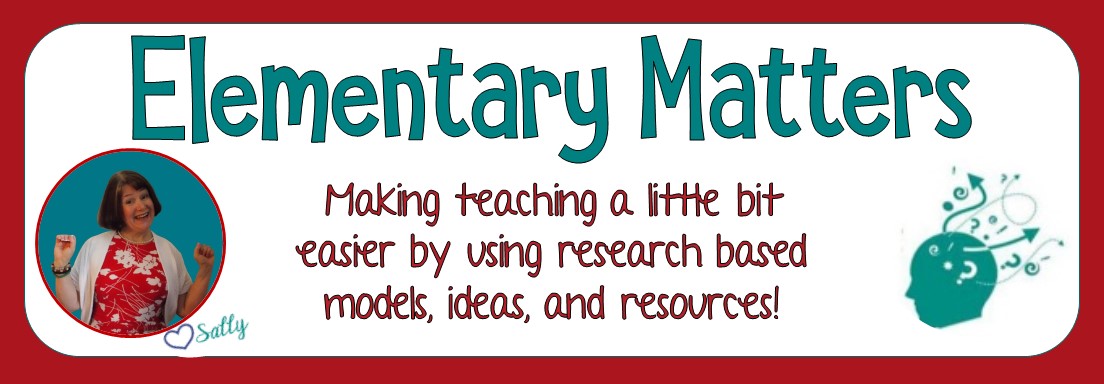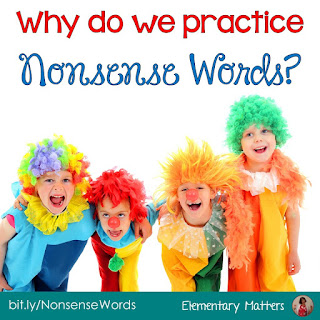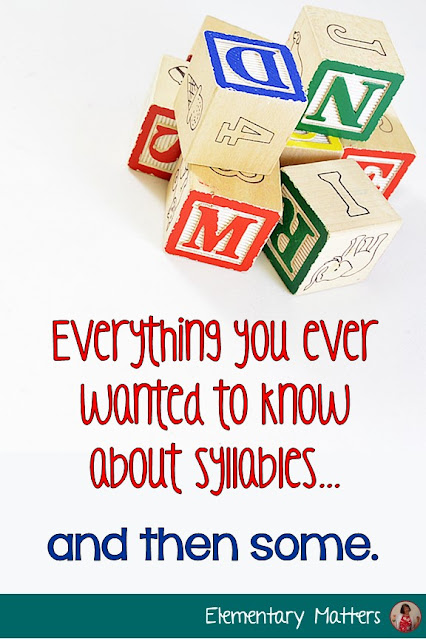Did you know there were 6 kinds of syllables?
Knowing the different kinds of syllables will help the children move as readers from reading basic single-syllable words to multi-syllabic words like watermelon and helicopter.
However, children shouldn't be trying to decode multi-syllabic words until they have mastered single-syllable words with blends, digraphs, short vowels, long vowel patterns, r-controlled vowels, diphthongs and other vowel pairs, prefixes, and suffixes.
In my second grade class, I'm still working on fluency with short vowels with several of my students, but my top readers are very much able to decode multi-syllabic words, as well as spell them!
Here are the six kinds of syllables:
- Closed Syllable - These are short vowels followed by a consonant, such as num in number, or vel in velvet.
- Vowel Consonant e Syllable - This is your classic long vowel/ silent e pattern such as ade in parade or cide in decide.
- Open Syllable - These are long vowel syllables that end with the vowel such as ta in table and spi in spider.
- Consonant l e Syllable - These are at the ends of words like ble in table and tle in little.
- R- Controlled Syllable - These have an r controlled vowel such as gar in garden and der in under.
- Vowel Digraph/ Diphthong "D" Syllable - These contain a diphthong or a vowel diagraph. (Sometimes called "vowel teams") Examples are thou as in thousand and poi as in poison.
Why is it important to teach syllables? When readers break unfamiliar words into syllables, the words become easier to decode. Learning about syllables also help students remember spelling patterns. Knowing how to decode syllables will help children become more fluent readers, and studies show that fluency helps comprehension. And that's our goal, isn't it?
Many teachers teach syllables by having the children clap the beat of the syllables. This works for most children.
A more tactile way is to teach the children to place their hand under their jaw as they say the words. As the mouth will open for every vowel sound (and each syllable represents a vowel sound) the jaw will tap the hand for each syllable.
Want to read more about syllables?
- Six Syllable Types on Reading Rockets was co-written by my instructor of the LETRS training, so it's got to be quality information! (And interesting, too!)
- Vocabulary.co.il has a couple of syllable games and videos for the kids.
I've put together a resource with a couple of lists that can be used for practicing with syllables. There are a few options for using my syllables lists. They could be used simply as lists for children to practice reading. They could also be cut out and shuffled, for the kids to sort. They could sort by syllable type, or simply how many syllables are in the words. Find your resource here: Reading 2 and 3 Syllable Words.
Enjoy this resource and your 6 kinds of syllables!
Want some more work on syllables?
Check out Buggy Syllables
and
Plus, here's a blog post that explains more about why children should practice nonsense words:







Sally,
ReplyDeleteI love this! I teach first grade and try to teach this to my students. What a great resource your page is.
If you get a chance, please come visit mine.
Joell <-your newest follower
Totally Terrific Teaching
Joell,
ReplyDeleteThanks so much! I've been realizing that when I learn something new, I remember it better if I blog about it!
Sally
Hi, you run such a helpful website, on this one! And I have a question for you. Is this a premium theme which you buy online or a default one?
ReplyDeleteWhat great information! Thank you so much for sharing :)
ReplyDelete-Julie
The Techie Teacher
Great refresher! When I taught at a Reading First school, we had a training session about syllables and I believe we received a book that gave lots of good word samples. If I remember which book it is I'll let you know.
ReplyDeleteKatrina
http://lessonplansandlollipops.blogspot.com/
Thanks! I'm starting to plan an intervention group for reading multisyllabic words and was so excited to find this resource. I already have your "homerun" syllable game for reading two-syllable words with long vowels. My students are always thrilled when I pull that out.
ReplyDeleteJan
Laughter and Consistency
This is great! Thank you for sharing.
ReplyDeleteThis is great! Thank you for sharing.
ReplyDelete